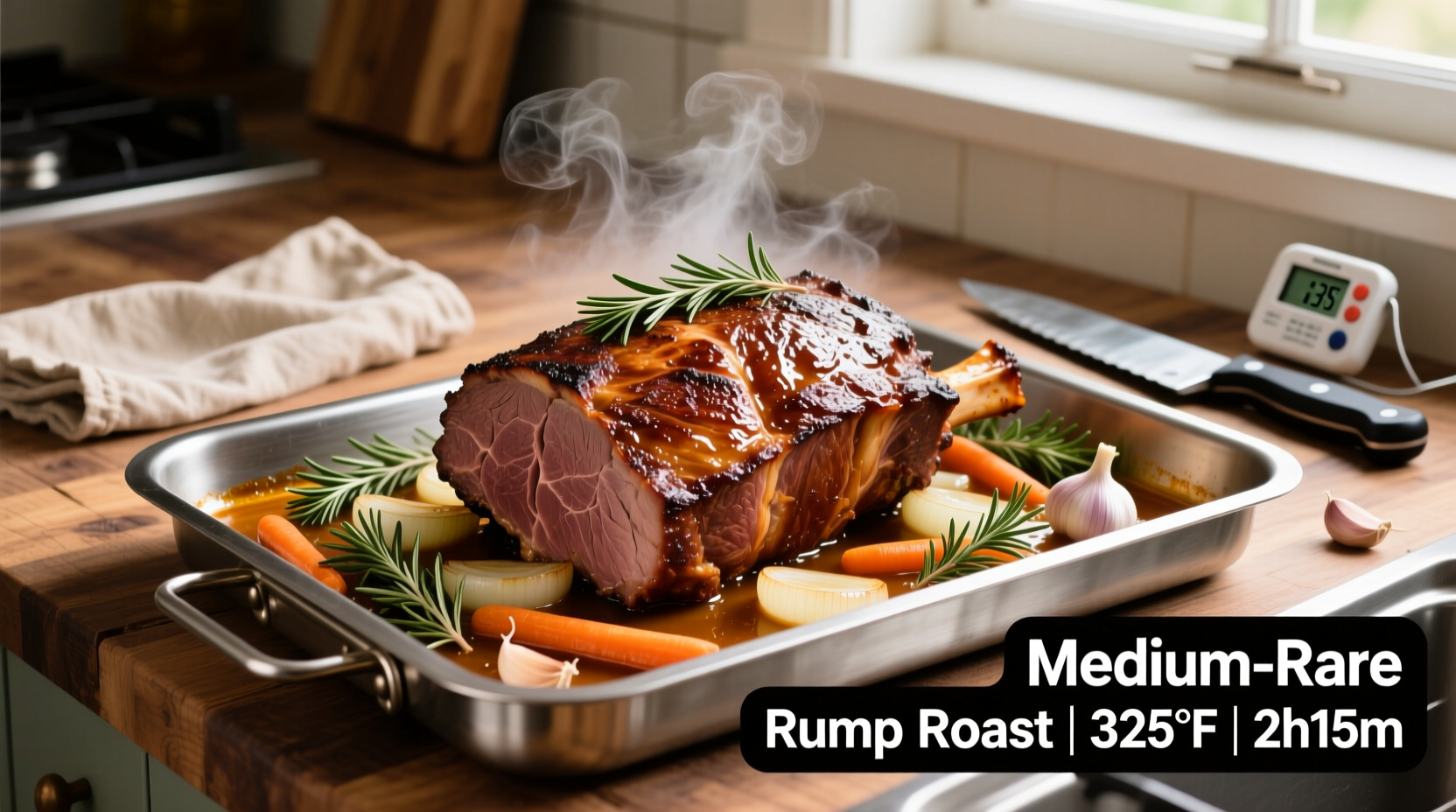The perfect oven-cooked rump roast requires a 3-4 pound cut seasoned generously, seared at 450°F for 15 minutes, then roasted at 325°F for 15-20 minutes per pound until reaching 135°F internal temperature for medium-rare. Always rest for 20 minutes before slicing against the grain for maximum tenderness.
Nothing beats the rich aroma of a perfectly cooked rump roast filling your kitchen. This affordable yet flavorful cut from the hindquarters of the cow transforms from tough to tender when prepared correctly. In this guide, you'll master the precise technique that delivers restaurant-quality results every time—no special equipment needed, just your standard oven and basic kitchen tools.
Why Rump Roast Deserves Your Attention
Rump roast, sometimes called beef round roast, comes from the well-exercised hind leg area. While leaner than prime rib or chuck roast, its dense muscle structure responds beautifully to slow, controlled oven roasting. The secret? Understanding how connective tissues break down between 140-205°F through the process of collagen conversion to gelatin.
| Cooking Stage | Temperature Range | Chemical Process | Texture Result |
|---|---|---|---|
| Rare | 120-125°F | Myoglobin retains moisture | Red center, very soft |
| Medium-rare | 130-135°F | Initial collagen softening | Warm red center, tender |
| Medium | 140-145°F | Collagen conversion begins | Pink center, slightly firm |
| Well-done | 160°F+ | Excessive moisture loss | Gray throughout, potentially dry |
Preparation: Setting Up for Success
Begin with a 3-4 pound rump roast—large enough to feed 4-6 people but small enough to cook evenly. Remove the roast from refrigeration 60-90 minutes before cooking to bring it to room temperature, preventing uneven cooking. Trim excess surface fat to about 1/4 inch thickness, leaving some for flavor and moisture.
Seasoning is crucial for this lean cut. Create a paste with 2 tablespoons olive oil, 2 teaspoons kosher salt, 1 teaspoon black pepper, 1 teaspoon garlic powder, and 1/2 teaspoon dried rosemary. Massage this mixture thoroughly over all surfaces. For deeper flavor penetration, make small incisions with a paring knife and insert slivers of garlic.
The Two-Stage Cooking Method

Professional chefs use this two-temperature approach for optimal results:
- High-heat sear (15 minutes): Preheat oven to 450°F. Place roast on a rack in a roasting pan, fat-side up. Insert meat thermometer into thickest part. Roast uncovered for 15 minutes to develop a flavorful crust.
- Slow roast (15-20 min/lb): Reduce oven temperature to 325°F without opening the door. Continue roasting until thermometer reads 125-130°F for medium-rare (accounting for 5-10°F rise during resting). For a 3.5 pound roast, expect approximately 50-60 minutes.
Avoid common pitfalls: Don't baste frequently (opens oven too often), don't add liquid (this isn't pot roast), and never pierce the meat with a fork while cooking (releases precious juices).
Resting and Carving: The Critical Final Steps
Transfer the roast to a cutting board, tent loosely with foil, and rest for 20 minutes minimum. This allows juices to redistribute throughout the meat—skipping this step causes up to 40% juice loss when carving, according to research from the Culinary Institute of America.
When carving, identify the direction of the muscle fibers and slice perpendicularly (against the grain) in 1/4 inch thick slices. Rump roast has complex grain patterns, so examine the meat carefully before each slice. Serve immediately with pan drippings spooned over the top.
When This Method Works Best (and When to Choose Alternatives)
This oven method excels with standard rump roasts between 2.5-4.5 pounds. For larger cuts (over 5 pounds), consider starting at 300°F for the entire cooking process to prevent exterior overcooking. If your roast has significant marbling, reduce initial sear time to 10 minutes to avoid excessive fat rendering.
Alternative approaches become necessary when:
- Using a convection oven (reduce temperature by 25°F)
- Cooking frozen roast (add 50% to cooking time, no sear)
- Seeking fall-apart texture (use slow cooker instead)
Troubleshooting Common Issues
Dry results: Most often caused by overcooking or insufficient resting. Always use a thermometer—don't rely solely on time estimates. For future attempts, try lowering oven temperature by 25°F.
Undercooked center: If temperature hasn't reached target after estimated time, continue roasting but check every 5 minutes. Create a foil tent if exterior is browning too quickly.
Uneven cooking: Rotate the roasting pan 180 degrees halfway through cooking. Ensure oven rack is positioned in the center of the oven for even heat distribution.
Serving Suggestions and Leftover Ideas
Pair your rump roast with classic accompaniments: roasted root vegetables, Yorkshire pudding, and horseradish cream sauce. For a modern twist, serve with red wine reduction and caramelized shallots.
Transform leftovers into next-day favorites:
- Slice thinly for French dip sandwiches
- Chop for beef stroganoff
- Use in shepherd's pie topping
- Shred for tacos with chimichurri
Store leftovers in airtight containers for up to 4 days, or freeze in portion-sized containers for up to 3 months. Reheat gently in broth to maintain moisture.











 浙公网安备
33010002000092号
浙公网安备
33010002000092号 浙B2-20120091-4
浙B2-20120091-4